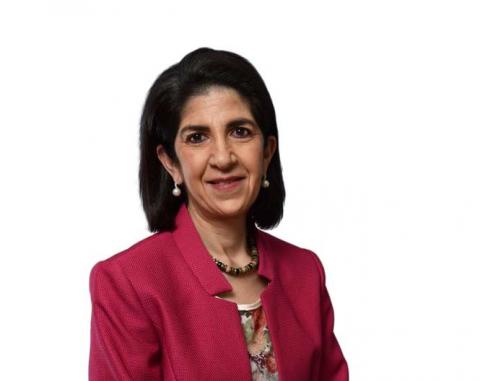On 14 January at our traditional beginning-of-the-year gathering in the Main Auditorium, my fellow Directors and I presented a review of 2019 and a look forward to the year ahead.
One of the main focuses of last year was Long Shutdown 2 (LS2), with its variety of demanding activities. LS2 proceeded according to our familiar principle of safety first, quality second and schedule third. All three have been met! The LHC Injectors Upgrade (LIU) project is more than 80% complete. When the commissioning of the vastly improved accelerator complex gradually starts in April this year, Linac4 will become the first stage of the proton accelerator chain. The PS booster will run at a higher energy, 2 GeV instead of 1.4 GeV, the PS will have new injection and feedback systems and the SPS a new radiofrequency system with innovative solid-state powering.
Preparations for the High-Luminosity LHC (HL-LHC) were also a major feature of 2019, encompassing everything from civil engineering to magnets. Some 1.2 kilometres of accelerator will be equipped with new components. A major accomplishment was the successful construction and qualification for installation of an 11-tesla dipole magnet using Niobium 3-Tin (Nb3Sn) superconductor. The civil engineering work at Points 1 and 5 to excavate the underground tunnels and service caverns needed to host the HL-LHC components is 80% complete. The schedule and cost-to-completion of the HL-LHC and the experiments were revised at the end of 2019. The HL-LHC has a roughly 4% cost overrun due to greater expenses for the civil engineering work, and the need for additional machine-protection components. The experiments would like to have more time to complete their upgrades. As a consequence, LS2 has been extended by two months, and LS3 has been delayed by one year to accommodate the extra time needed by ATLAS and CMS to finalise their Phase 2 upgrades while maximising the integrated luminosity from Run 3.
The year 2019 saw the release of beautiful physics results covering CERN’s full scientific programme, from LHC to fixed-target experiments. At the LHC, a highlight from ATLAS was the observation and measurement of Z boson pair production in vector boson fusion, while CMS substantially extended its limits on new physics through the search for high-mass di-jet resonances. The LHCb experiment scored a first with the observation of CP violation in the decay of charmed hadrons, while ALICE measured the lifetime of an exotic particle called the hypertriton, whose study may give insight into the interactions occurring in the core of neutron stars. Highlights from the fixed-target programme include progress in the study of the extremely rare K+ → π+νν decay from NA62 and new results on searches for dark photons from the NA64 beam dump experiment. Both are promising avenues to search for new physics in ways that are complementary to high-energy colliders. These are only a few examples from a very scientifically productive year.
With the equivalent of 860 000 CPU cores in continuous operation, the WLCG computing infrastructure broke new records in 2019, heralding an approaching paradigm shift. The evolution of the current resources will suffice for Run 3, but the HL-LHC will require a factor of 2-3 times more computing capacity. To prepare for this, efforts have already started in the framework of the HEP Software Foundation, WLCG and the experiments to develop new architectures for data management and processing, new computing models aimed in particular at the reduction of data volumes, multithreading, portable software and other innovative approaches.
This year, 2020, is the year of the update of the European Strategy for Particle Physics. Following the symposium in Granada in May 2019, the European Strategy Group has been hard at work, and drafted its recommendations to the Council during a meeting in Bad Honnef, Germany, last week. The Council is expected to examine these recommendations in March and to approve the Strategy update at a special meeting on 25 May in Budapest.
These are just a few of the topics my fellow Directors and I discussed in our presentation to the personnel. There is much more in the video and slides, available here, covering many aspects of life and work at CERN, from the Medium-Term Plan to the five-yearly review of the financial and social conditions of members of the personnel, surveys of staff and fellows, and the status of the Science Gateway project. Looking back over the year, I am once again humbled by what you have achieved in just twelve months, and I’d like to thank you all very warmly.

